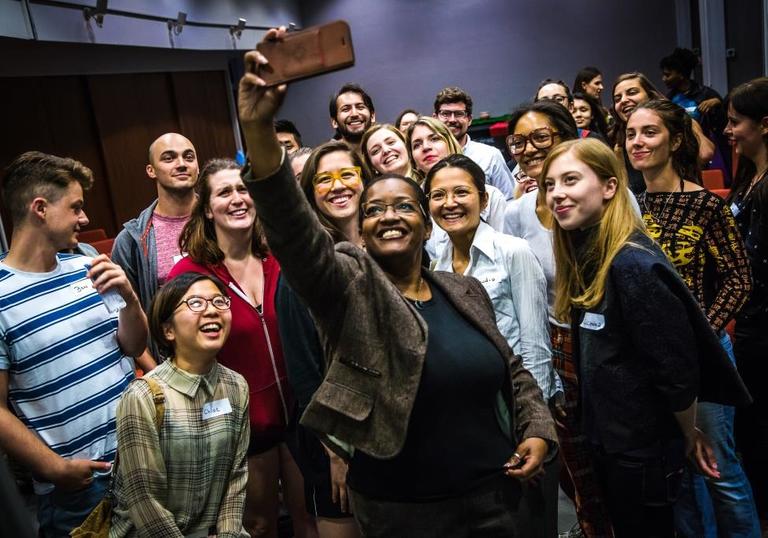Whether it’s collaborators, press coverage or cold hard cash you’re after, networking is often the way to get it. But with just seven seconds to make an impression, you need to make sure people remember you - and for the right reasons.
Greet like a pro
How would you go up and greet someone you’ve never met before? It sounds so simple but it’s not. Think about how you appear when you introduce yourself.
Uncross your arms. Come closer - I don’t smell. Turns out there’s a knack to greeting people. Kym recommends you walk up confidently, smile, make eye contact and say:
‘Hello my name is [whatever your name is] and I’m [a dancer/producer/photographer/puppeteer/ whatever you are]. Lovely to meet you.’
When shaking hands, keep your elbow tucked neatly into your waist and be gentle. Imagine you’re grabbing a toddler’s hand. And no arm rubbing...
Make an impact
On first meeting you, there are three things people consider. Most (58%) of their impression comes from non-verbal cues. That means everything except for what comes out your mouth, so body language, facial expressions, your dress sense. Then 38% is about how you speak, your delivery, your accent, how loud you are and the tone of your voice. Only 7% is the words you say.
Coined in 1920 by psychologist Edward Thorndike, the ‘halo effect’ is the idea that we all have unconscious biases which rule the way we think, Kym explains. ‘Everyone makes assumptions about other people - jurors make assumptions about defendants, teachers about students. We all have biases - we have to work out a way to negotiate them.’
It’s important to understand what new people see and think when they meet you and what assumptions you hold about them.
Have a strategy
Before you head off to network, you need to be clear on your objective. Why are you at this event? What are you looking for? Who should you be speaking to to get it? Never, ever, ever go networking without your business cards. You don’t have to fork out a fortune on something super fancy. You can order them online for a great price through companies like Vistaprint. Don’t clutter your card up with unnecessary info either, you just need to include your name, what you do, a phone number and an email address. Get a LinkedIn profile - it shows that you’re part of the business community. It’s also a great tool if you don’t have your own website. Remember, people will definitely Google you afterwards so remove any drunken pictures from your social networks or tighten your privacy settings so that potential employers or funders can’t see them.
Be authentic
Networking is all about relationships, Kym adds. You need to talk to people like you would if you were in the pub. People can tell if you’re lying. If you normally use your hands when you talk, keep doing that. Be excited about what you do. And remember to listen.
You should listen more than you speak. You want to hear what people need so you can sell them what you’ve got.
Practice pitching
When you’re networking, you need to have nailed your spiel. You can read about how to present your project in our article on pitching. It can be helpful to practice this with a friend in advance but make sure you and they both know how to give feedback in a way that’s constructive. Not sure how? Remember this acronym: WIN.
It will remind you to say something that was Wonderful, something that they need to Improve, before finishing with something Nice. For example: ‘You described your theatre company in such an engaging way. I wanted to know sooner that you were looking for people to join your team. Those statistics you included in the beginning were a nice touch - it gave you real credibility.’
Your pitch needs a beginning, middle and an end. You need to cover what you need and why, before summing up what you’ve said. People want to know how they’ll benefit. That’s not necessarily always financial, it can be collaborative but be clear about what’s in it for them. Make your opening salvo exciting. Don’t just say your name - go straight into what it is you do. Prepare, but don’t over rehearse. Only write down to figure out structure, never refer to notes.
Like with networking more generally, the secret is that you need to put your heart into it. Be confident, be yourself and above all, be memorable.
Words by Rachel Segal Hamilton.
This session took place on 22 August 2017

